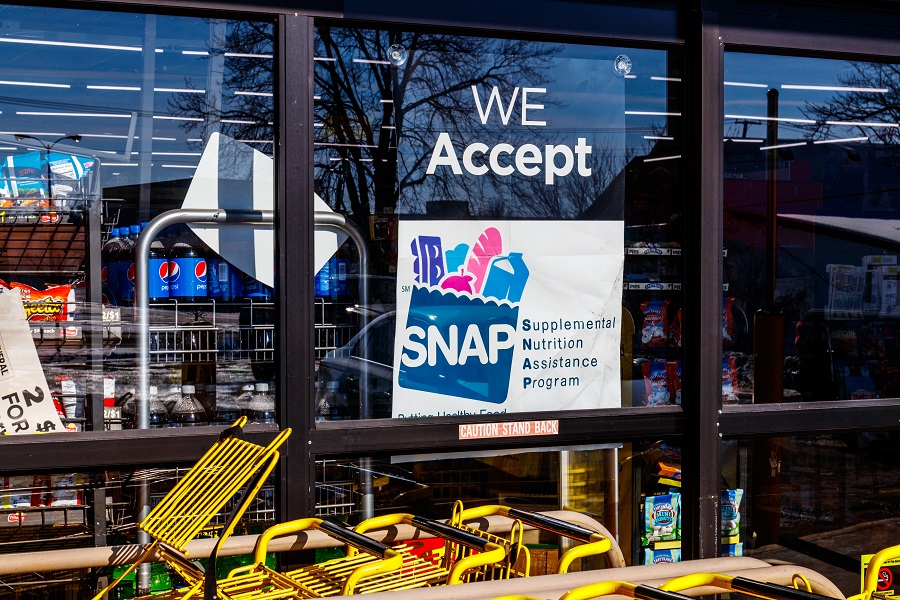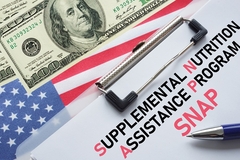SNAP reform: Six decades of US nutrition assistance policy reveals what works and what doesn’t
Key takeaways
- SNAP is most effective when it simplifies enrollment and provides adequate benefits tailored to local food costs, according to a comprehensive analysis of the program.
- Policies that increase administrative burdens or restrict food choices are generally ineffective and decrease program participation.
- Expanding work requirements risks substantially increasing food insecurity and program exits with minimal employment gains.
A comprehensive analysis of the US Supplemental Nutrition Assistance Program (SNAP) assesses six decades of policy changes to advise the best course of action that would significantly combat food insecurity. The authors assessed the impact of proposed changes to SNAP in the recently passed “Big Beautiful Bill.”
The peer-reviewed report covers legislative changes, empirical economic evidence, and current political debates to clarify “what policy reforms are most effective, and which may undermine program goals.”
The study is one of the most comprehensive assessments to date of how recent and historical policy changes to SNAP affect food security, labor markets, and household well-being. As the largest food assistance program in the US, SNAP supports over 40 million citizens each year.
“SNAP is most effective when it reduces administrative barriers and provides adequate, flexible support that households can use according to their needs,” says co-author Dr. David Just, a professor in the Charles H. Dyson School of Applied Economics and Management at Cornell University, US.
“Policies that increase burdens or restrict choice tend to decrease participation without improving outcomes,” he stresses. “Our review underscores that many popular policy proposals do not achieve their stated goal.”

Key takeaways from six decades
The review, published in Nature Food, comes at a critical time as the Trump administration’s 2025 One Big Beautiful Bill Act enacts the most significant restructuring of SNAP in over a decade.
The review outlines the most effective reforms to the program, which include simplifying enrollment procedures to reduce administrative burdens and updating benefit calculations to better align with local food prices and high food inflation.
Moreover, the authors recommend the US government to avoid expanding work requirements without strong supporting services and to integrate positive nutrition incentives directly into benefit transfer systems.
The review authors say that expanding work requirements for “able-bodied adults without dependents” to qualify for assistance, as proposed in the One Big Beautiful Bill Act, risks increasing food insecurity and program exits up to 64% while producing “little to no” employment gains.
Furthermore, the authors stress that “administrative burdens, not eligibility, drive much of the enrollment gap.” Many eligible households fail to enroll due to complex paperwork, documentation demands, and recertification procedures. Streamlining enrollment substantially increases take-up and reduces food insecurity, reveals the analysis.
Another finding is that benefit restrictions on “unhealthy” foods are generally ineffective unless coupled with positive incentives like fruit and vegetable subsidies. Six states recently received US Department of Agriculture waivers to restrict purchases of items such as sugar-sweetened beverages.
Burden of inflation
Moreover, it flags that inflation has made it harder for families to afford a basic grocery basket. SNAP benefits have not kept pace with the rising cost of food.
 As the largest food assistance program in the US, SNAP supports over 40 million citizens each year.The report outlines that localized price variations means many households face inadequate support even when receiving maximum benefits.
As the largest food assistance program in the US, SNAP supports over 40 million citizens each year.The report outlines that localized price variations means many households face inadequate support even when receiving maximum benefits.
“In many cities, food costs are far above the national average, but SNAP benefits are not. Adjusting benefits for local prices would help families keep up,” says co-author Dr. Vincenzina Caputo, the Homer Nowlin Endowed chair in Consumer and Food Economics at Michigan State University, US.
“As Congress debates the future of SNAP, it is essential that reforms are guided by evidence rather than assumptions.”
Repealing cuts to SNAP
This week, US lawmakers introduced the Restoring Food Security for American Families and Farmers Act of 2025 to repeal the “largest cuts in history” to the SNAP. US Senators Ben Ray Luján, Amy Klobuchar, and Jeff Merkley, and US Representatives Jahana Hayes and Angie Craig are driving this bill forward.
The lawmakers state that to fund tax breaks for the wealthy, Republicans approved cuts that Congressional Budget Office estimates will eliminate US$187 billion in food assistance over the next decade, even as grocery prices rise and Trump tariff costs increase.
“These cuts will take meals from millions of children, seniors, veterans, workers, and people with disabilities, while harming farmers, ranchers, small businesses, and grocers who rely on SNAP dollars. The bill also creates a massive unfunded mandate on state governments that could force deep cuts or even eliminate SNAP entirely.”
The US Food Research & Action Center welcomes the act, with the organization’s president Crystal FitzSimmons saying: “The time limits placed on groups (parents of children ages 14 or older, veterans, and adults experiencing homelessness) are going to start hitting in a couple of months, so families are going to use benefits in a few months because of this bill. We need to reverse course and build a nation free from hunger, and we need Congress to pass this bill now.”















